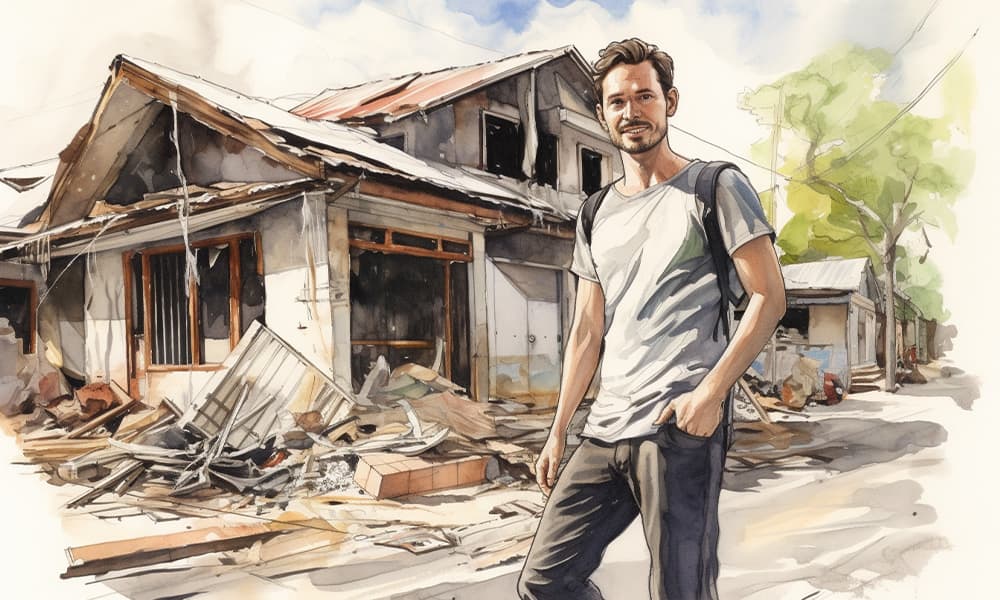In Costa Rica, there is always a whole lotta shaking going on. This beautiful but unstable land mass we call home is continually in motion, with tectonic plates constantly pushing against each other far below the earth’s surface.
According to Oviscori–the government agency that monitors all seismic and volcanic activity in the country– there are thousands of recorded tremors annually, though most are not felt. However, most years there is an average of one per day that is felt somewhere in the country. Most are brief, a bit of gentle shaking, a slight belch from the tectonic depths. I had never experienced any type of tremor or quake until I lived in Costa Rica.
The first was in December, 1990. At the moment the earthquake struck, I was sitting outside my house in Dulce Nombre de Coronado, reading an article about Costa Rica’s history of earthquakes. I am not making this up;
It was the craziest coincidence ever. I remember hearing the quake before feeling it. There was a steady rumbling sound and the ground undulated- a visible wave movement of the earth passed before my eyes. My dog began barking and I heard plates crashing to the ground inside the house. Within a minute it was over.
Then came the ‘replicas’, periodic aftershocks to keep everyone on edge. Most of my neighbors milled around outside, hesitant to enter their homes. That was the day I learned the word ‘terremoto’, Spanish for earthquake.
The epicenter had been north of Alajuela, and not far from where I was living. About 4 months later I was on a bus, returning from my job as an English teacher in San Jose, when the driver suddenly braked and shouted. I looked out the window and saw a large metal fence swaying wildly while a small child stood unattended nearby.
This seemed to go on for a couple minutes, though it was probably less. When I got home, all my neighbors were again outside, and some camped the night under the stars. This was the famous Limon earthquake of April, 1991, that registered 7.4 on the Richter scale and killed over 100 people. Photos in the next day’s papers showed collapsed bridges, twisted rail lines, a highway that looked like it had been bombed. That evening I was not yet aware of the severity of the quake.
Then I tuned into the BBC world news on my shortwave radio and it was one of the evening’s lead news stories. Sismos are as much a part of living here as coffee in the morning with gallo pinto and eggs. They come with no warning, and the gentler ones last just long enough that you are relieved when they stop. Its when they don’t stop, that damage is being done somewhere.
Once I was driving a rental car between San Jose and Quepos and thought I had a flat tire for a few seconds. I slowed down then the car seemed to right itself. When the song on the radio ended, the dj came on and the first words out of his mouth included the word terremoto again. I have long lost count of the number of times I have felt everything from a gentle rocking to a full blown extended jolt.
I have felt them while driving, walking, sleeping, shopping, talking on the phone, and while in bed sleeping. In geological terms, we are part of the Panama Microplate, which is slowly moving north relative to the stable Caribbean Plate. The movement is slow but constant, so keep this in mind–if you plan to someday make Costa Rica your home, prepare to be rocked!

